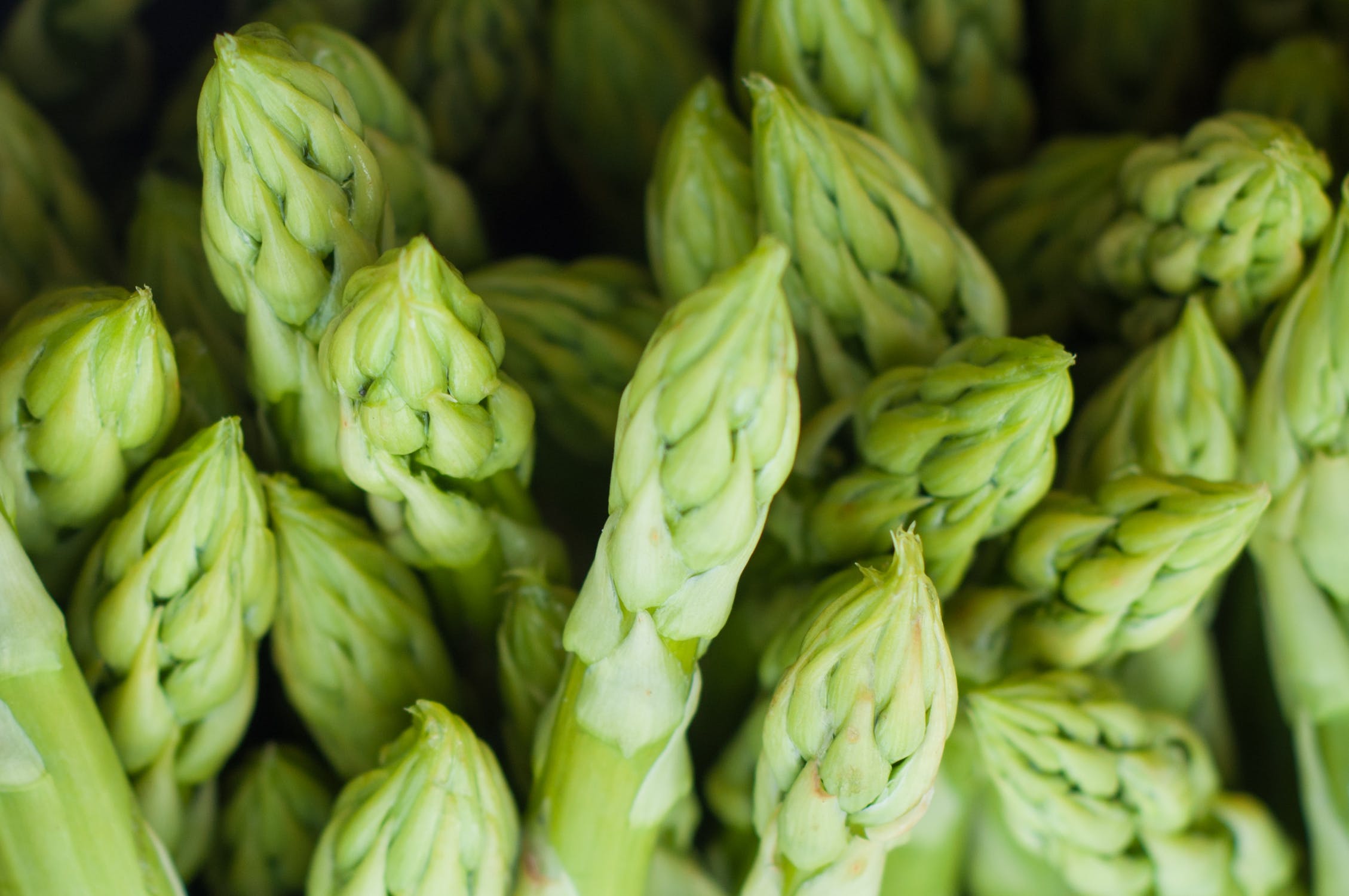ASparagus
Asparagus is a time-tested vegetable favorite. High in vitamin C and K, asparagus can be baked, boiled, grilled, or sauteéd and still retain its intense flavor. While asparagus takes a while to become established, it's so resilient it can grow for 30 to 50 years.
VarietiEs
Most of the asparagus you see in grocery stores is a Jersey variety. Jersey varieties are very reliable and include Jersey Knight, Jersey King, Jersey Giant, and Jersey Supreme. Waltham Washington and Mary Washington varieties are also hardy, rust-resistant varieties frequently found in gardens. If you live in warmer climates, you might want the Princeville variety which does well in heat. If you're looking for a beautiful purple addition to your garden, Purple Passion is a gorgeous, uniquely colored variety - until it’s cooked when it loses much of its purple color.
WHERE ASPARAGUS THRIVES
Regional compatibility
Asparagus can be grown almost everywhere across the contiguous United States. It does best, however, in northern climates where it gets a winter rest period. After a cold winter, the spring's warming soil jolts asparagus to life. Milder winters typical of southern climates may not allow asparagus to rest, and if it's not allowed to regularly go dormant asparagus just wears out and dies. Asparagus also has a harder time getting established in southern regions where summers are long, hot, and humid.
Optimal shade & sun
Asparagus, which has a lot of surface area in its foliage, loves to bask in the warm sun. So try to choose a sunny spot for your plants and protect the stalks from wind if possible.
RESILIENCE
ADAPTABILITY TO CLIMATE EXTREMES. Asparagus, once established, is highly adaptable to climate extremes. While it takes a while to get going, mature asparagus can sustain itself through dry, drought conditions. More tolerant of salt than most perennials, asparagus also grows well in seaside soils. It can survive short periods of flooding but prolonged soggy soils will rot the shallow crowns. Young plants need to be well watered and fertilized in dry, hot climates and covered with mulch in freezing ones.
DROUGHT RESISTANCE. While asparagus takes a while to get started, it can sustain itself through dry, drought conditions after it has matured and taken hold.
PREP YOUR SOIL
OPTIMAL SOIL TYPE. Asparagus grows best in sandy soil that’s heavily composted but it does just fine in most garden soil. It will lose some of its vigor in highly acidic soil. Try to avoid walking over your asparagus patch - in winter and spring; asparagus spears grow best in soil that is well-aerated, not hard-packed.
PLANTING
WHEN PLANTING INDOORS
You can plant asparagus from seed or crowns, which is the part of the plant where the root meets the stem. Growing from seed is generally more difficult than growing from crowns. If you choose to grow from seed, it's best to start indoors 12 to 14 weeks before your first spring frost. Plant seeds ½” to ¾” deep in two-inch pots.
WHEN PLANTING IN THE GARDEN
Seedlings can be planted outside once it's summer and daytime temperatures have reached the 70s. But crowns are the most reliable way to establish your asparagus patch. Crowns are year-old root sections that can be purchased from your favorite seed catalog. Asparagus crowns and transplants must be planted in trenches.
HOW TO PREP YOUR SOIL FOR ASPARAGUS
Dig a trench 12 inches deep. Take the excavated soil and mix it in a wheelbarrow with compost.
Fill in the trench with four inches of the soil/compost mixture that the trench is now eight inches deep. If you're planting in heavy clay soil, pile in enough compost/soil mixture to make it a four-inch trench.
Place the crowns or seedlings in the trench about 12 inches apart. Be careful to separate and untangle the roots. Asparagus planted too close together will promote spindly and thin shoots that may not be strong enough to push through the surface.
Cover the crowns with four to six inches of soil. If you're transplanting seedlings, cover them with soil halfway up stem. As the asparagus spears grow and begin to emerge from the soil, continue to keep the shoots covered. Fill in the trenches with any extra soil and compost mix until the entire trench is level with the rest of the bed. This should take you through the first growing season.
Dig down 12 inches, take the excavated soil, and mix it in a wheelbarrow with compost.
Place the crowns in the trench, and be careful to separate and untangle the roots.
Cover the crowns with 4 to 6 inches of soil. As the asparagus grows and begins to emerge from the soil, continue to keep the shoots covered. Fill in the trenches with the extra soil and compost mix until the entire trench is level with the rest of the bed. This should take you through the first growing season.
Growing
Growing asparagus is a marathon, not a sprint, and you'll need to take the long view while waiting for it to take hold. Asparagus roots grow horizontally, not vertically, so eventually your asparagus will have a fairly dense, thick mat of intertwined roots. Here's something important: Weed your asparagus! Weeds can easily divert nutrients from your asparagus and, especially when young, keep it from becoming established. In their first year, shoots will be thin and weak.
Don't harvest them until the second year or when asparagus shoots are thicker than a pencil. Ideally, you can hold out until the third year when the asparagus will have had the time and care to establish its place in the garden. Spears left to grow will turn into beautiful tall, ferny branches with red berries at the top of the plants. In colder regions protect your asparagus crowns from winter with a layer of hay mulch. Each spring, add a layer of mulch or compost to add nutrients and help suppress weeds.
WaterinG
Asparagus needs heavy, consistent watering when young. Keep beds moist but never soggy to reduce the risk of disease. Established asparagus will do just fine with less water. In areas of the country that get regular bursts of rain you won't need to do any additional watering.
CHALLENGES
PESTS. Asparagus doesn't suffer from many pests. Its one major foe is the asparagus beetle, which is about one-third inch long and can be hand-picked off asparagus when it’s too cold for them to fly, typically in early morning and evening. Removing plant debris in the winter helps to keep the beetles at bay because that's where they grow and develop during the winter.
DISEASES. Purple spot, rust, root rot are all soil-borne fungal diseases that plague asparagus plants. Overwatering and moist growing conditions increase the likelihood of disease. If you have to plant a patch in less than ideal conditions, consider buying crowns, which are more resistant.
______________________________________________________________________________________________
RECIPES
Pan-Seared Asparagus and Shitake Tacos













